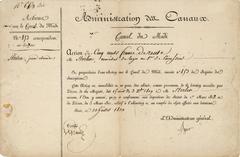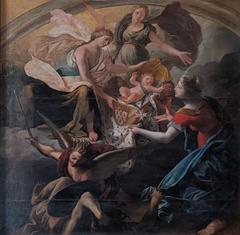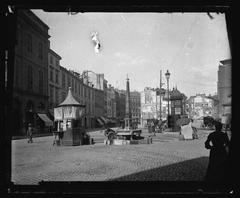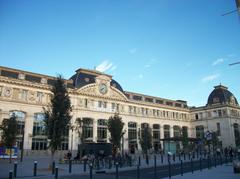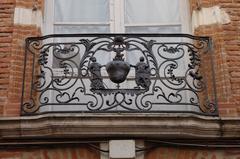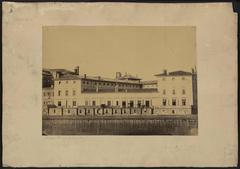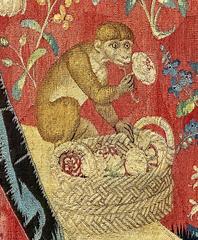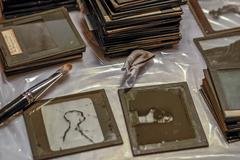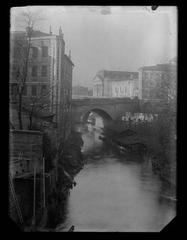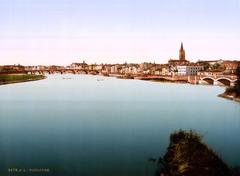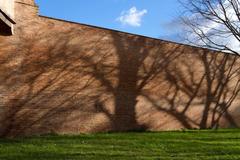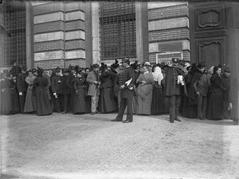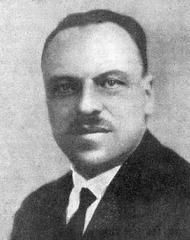Hôtel Desplats ou de Palaminy: Visiting Hours, Tickets, and Historical Guide – Toulouse, France
Date: 03/07/2025
Introduction
The Hôtel Desplats, also known as Hôtel de Palaminy, is a premier example of Toulouse’s rich architectural and cultural legacy. Nestled in the city’s historic center, this grand Renaissance mansion embodies the evolution of Toulouse from its medieval roots, through periods of prosperity driven by the pastel (woad) trade, to its neoclassical refinement in the 19th century. Originally a private residence for prominent families, the mansion today stands as a symbol of Toulouse’s urban and civic history. While regular public access is limited due to its continued private use, special cultural events such as the Journées du Patrimoine (Heritage Days) offer rare glimpses inside, allowing visitors to admire its preserved interiors and stunning architectural features.
This comprehensive guide details the historical background, architectural significance, visiting hours, ticketing information, accessibility, nearby attractions, and practical travel tips for visitors. For the most accurate and timely updates, refer to the official Toulouse tourism website and specialized heritage resources (palaminy.com/history, Toulouse Tourisme).
Table of Contents
- Introduction
- Historical Overview
- Architectural Significance and Features
- Visitor Information
- Travel Tips
- Nearby Attractions
- Frequently Asked Questions (FAQs)
- Conclusion and Practical Resources
- References
Historical Overview
Medieval Origins and Early Development
The origins of the Hôtel Desplats ou de Palaminy trace back to the medieval period in the Garonne valley, a region with a deep-rooted history. The mansion’s site and surrounding area were historically tied to influential families, including the Counts of Toulouse. The Palaminy estate, in particular, has records dating to the foundation of the bastide by Joan of Toulouse and Alfonso of Poitiers around 1260. Over the centuries, the property passed through the hands of various notable figures, each contributing to its evolving character.
Civic Liberties and Governance
Throughout its history, Palaminy was associated with progressive civic structures. The town’s inhabitants elected consuls annually, a tradition that survived until the French Revolution. In the 18th century, the Eimar family—owners of the Hôtel Desplats—played a vital role in local governance, embodying Enlightenment ideals and participating in significant political reforms.
Architectural Evolution and Restoration
Constructed initially in the early 17th century for Jean-Pierre Desplats, a parliamentarian, the building reflects the transition from late Renaissance to Baroque architecture. Major renovations in the 19th century under the Palaminy family, especially the neoclassical redesign by architect Louis Delor de Masbou, further enhanced its grandeur and urban presence. The façade, entrance, and interior spaces were carefully restored in the 20th century to preserve their historical integrity (palaminy.com/history).
Architectural Significance and Features
Renaissance and Baroque Foundations
The original structure (1620–1622) exemplifies the late Renaissance style, with symmetrical proportions, classical elements, and restrained ornamentation, while Baroque influences appear in the spatial layout and decorative details. The mansion was expanded over time, including the acquisition of adjacent land and the integration of a grand entrance on Rue des Tourneurs (Wikipedia).
19th-Century Neoclassical Transformation
A major transformation in the mid-19th century introduced a neoclassical façade, characterized by geometric clarity, classical orders, and balanced composition. The entrance hall and grand vestibule were designed to impress, featuring spaciousness and refined details (Monumentum).
Italianate Influences and Spatial Organization
Italian Renaissance influences are evident in the building’s volumetric clarity, the inclusion of a mezzanine above the entrance hall, and the ceremonial sequence from the porche through the vestibule to the grand staircase. This staircase, with its elegant cage and decorative ironwork, provides a dramatic focal point (Gralon).
Protected Heritage Elements
The hôtel has been partially listed as a Monument Historique since April 1, 1993. Protected elements include:
- The façade on impasse Saint-Géraud
- Street- and courtyard-side façades and roofs
- Porche, vestibule, and grand staircase with its cage
- Cellars and decorated first-floor apartments
These features are recognized for their architectural integrity and historical significance (POP Culture).
Decorative Details and Interior Features
Notable interior features include stucco decorations, classical moldings, ornate balustrades, and high ceilings illuminated by large windows. Some first-floor apartments retain original decorative schemes, reflecting the refined tastes of the mansion’s owners over the centuries.
Urban Context and Comparative Significance
Situated at 45 rue des Tourneurs, with access from rue Peyras and impasse Saint-Géraud, the hôtel is a prominent fixture in Toulouse’s historic center. Its use of local pink brick ties it to the city’s architectural identity as the “Ville Rose.” In comparison to other hôtels particuliers, such as Hôtel d’Assézat or Hôtel de Bernuy, Hôtel Desplats ou de Palaminy stands out for its layered historical development and stylistic synthesis (Toulouse Tourisme).
Visitor Information
Visiting Hours
- Regular Access: The Hôtel Desplats ou de Palaminy remains a private property and is not regularly open to the public.
- Special Openings: The mansion is accessible during special occasions such as the Journées du Patrimoine (Heritage Days), usually in September. Opening times and access are subject to event schedules.
Tickets and Admission
- Exterior and Courtyard: Visible year-round from public areas and free to view.
- Interior Visits: Available only during special events; typically free during Heritage Days, though some tours may require advance booking or a nominal fee.
- Guided Tours: Offered during heritage events or by special arrangement. Tours are primarily in French; English options may be available.
Accessibility
- The building’s historic nature means that full wheelchair access to the interior may be limited. The courtyard and exterior are generally accessible.
- Contact the local tourist office ahead of special events for specific accessibility arrangements.
Special Events and Guided Tours
- Heritage Days: The best opportunity to visit the interior, including the grand staircase and decorated apartments.
- Cultural Events: Occasionally hosts exhibitions, receptions, and concerts.
- Guided Tours: Enrich your visit with expert insights into the mansion’s history and architecture; advance booking is recommended.
Photography
- Photography is permitted for personal use in exterior and courtyard areas.
- Flash and tripods are generally prohibited inside during guided tours.
Travel Tips
- Getting There: Located in the Saint-Étienne quarter at 45 rue des Tourneurs (sometimes referenced as 15 Rue de la Dalbade for nearby sites), the hôtel is easily reached on foot from central Toulouse. Public transport (metro Line A, bus lines 14 and 19) provides convenient access.
- Parking: Limited in the historic center; use Parking Carmes or nearby garages.
- Best Time to Visit: Arrive early during event days to avoid crowds and secure a spot on guided tours.
- Dining and Shopping: Explore the Carmes and Saint-Étienne neighborhoods for local cuisine, markets, and artisanal shops.
Nearby Attractions
- Basilique Saint-Sernin: Romanesque masterpiece and UNESCO World Heritage site.
- Place du Capitole: Toulouse’s central square, ideal for lunch or coffee.
- Musée des Augustins: Fine arts museum in a former convent.
- Église Notre-Dame de la Dalbade: Renowned for its colorful ceramic tympanum.
- Jacobins Convent and Victor Hugo Market: Both within easy walking distance (France.fr).
Frequently Asked Questions (FAQs)
Q: What are the visiting hours for Hôtel Desplats ou de Palaminy?
A: Public access is generally limited to annual events like the Journées du Patrimoine in September. Check the official tourism website for current dates.
Q: Is there an entry fee or ticket required?
A: Exterior views are free. Interior visits during special events may require a ticket or advance booking, depending on the event.
Q: Are guided tours available?
A: Yes, during heritage events and occasionally by special arrangement. Booking in advance is advised.
Q: Is the mansion accessible for visitors with reduced mobility?
A: The courtyard and exterior are generally accessible, but interior access may be limited due to historic features.
Q: Can I take photos?
A: Yes, in exterior and courtyard areas. Interior photography is usually restricted during tours.
Conclusion and Practical Resources
The Hôtel Desplats ou de Palaminy offers a captivating window into Toulouse’s architectural evolution and civic history. Its status as a Monument Historique and its layered development across centuries make it a must-see for architecture enthusiasts and cultural travelers. While access is limited, planning your visit around special openings, such as the Heritage Days, allows you to experience its preserved grandeur firsthand. Enhance your itinerary by exploring nearby landmarks and immersing yourself in the vibrant Saint-Étienne neighborhood for a true taste of Toulouse’s heritage.
For up-to-date visitor information, event schedules, and guided tour bookings, consult:
Download the Audiala app for interactive audio guides and the latest on Toulouse’s historical sites, and follow us on social media for exclusive tips and updates.
References
- Hôtel Desplats Toulouse: Visiting Hours, Tickets & Historical Guide, 2025, Palaminy Heritage (https://www.palaminy.com/history/)
- Discover the Architectural Significance of Hôtel Desplats ou Palaminy, 2025, Wikipedia & Monumentum (https://fr.wikipedia.org/wiki/H%C3%B4tel_Desplats-Palaminy), (https://monumentum.fr/monument-historique/pa00125579/toulouse-hotel-desplats-ou-palaminy)
- Hôtel Desplats ou de Palaminy Visiting Hours, Tickets & Historical Guide in Toulouse, 2025, Toulouse Tourism (https://www.toulouse-tourisme.com/)
- Visiting Hôtel Desplats ou de Palaminy: Hours, Tickets, and Toulouse Historical Sites Guide, 2025, France.fr, Toulouse Tourisme, and Travel Guides (https://www.france.fr/en/article/what-to-do-toulouse/), (https://www.toulouse-tourisme.com/en/)

